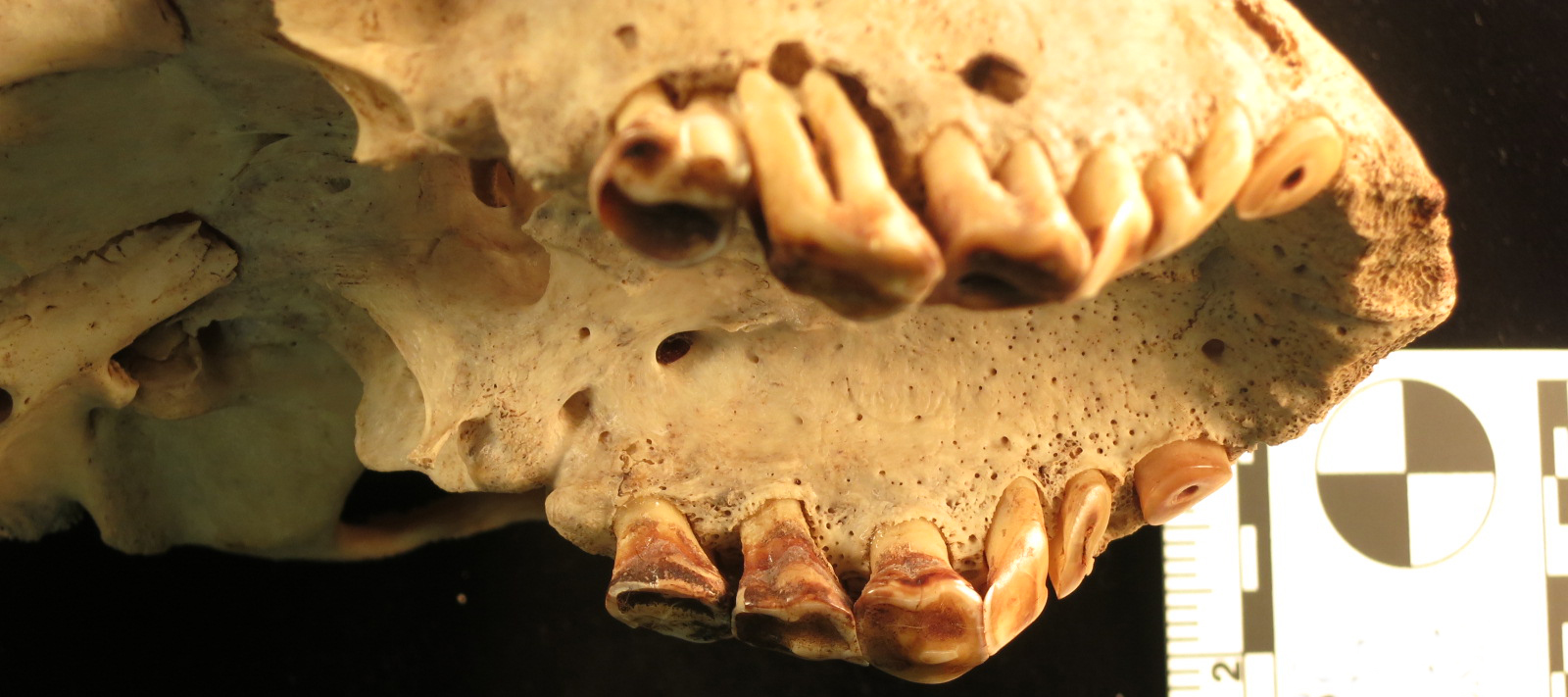ASU ancient DNA lab reveals secrets in chimpanzee teeth

A chimpanzee tooth with dental plaque. Photo by Rebecca Nockerts
Dental plaque — the stuff that your hygienist is always scraping off your teeth — holds a treasure trove of your DNA and, if not cleaned off occasionally, will build up and remain on your teeth long after you are gone. This is why dental calculus, or plaque, is a rich source of ancient DNA in the archaeological record and has been used to answer many biological and anthropological questions about Neanderthal diet and behavior and patterns of ancient human migration.
So, when researchers were looking to understand the oral microbiome of our closest relative — chimpanzees — they turned to this record of biological information.
The study, led by Arizona State University genetic researchers Andrew Ozga and Regents Professor Anne Stone, found that there are core differences between chimpanzee and human oral bacteria. Surprisingly, no other research projects have focused on great ape oral ecosystems using dental calculus. Therefore, analyses of the results could only be compared against existing modern and prehistoric human samples.
From this first-of-its-kind investigation, researchers were able to assemble a full genome of a common pathogenic bacteria, P. gingivalis, from a single chimpanzee, and they found it is not too different from ones found in humans. Results also indicate that though there are many differences between chimpanzee and human oral bacteria, it is not clear if the differences are a result of diet, geography, host genomes or other unknown factors.
The paper, which was co-authored by ASU primatologist Associate Professor Ian Gilby, was published in Nature Scientific Reports and conducted in ASU’s ancient DNA lab, directed by Stone. Stone and Gilby are both research affiliates with the Institute of Human Origins and faculty in the School of Human Evolution and Social Change. Stone is also an associate director of the Center for Evolution and Medicine. Ozga is a former postdoctoral researcher with the ASU Center for Evolution and Medicine, now at Nova Southeastern University.
“Since we can’t go sticking our hands into the mouths of wild chimpanzees to sample oral bacteria, we thought it might be possible to use dental calculus recovered from chimpanzees at Gombe," said Ozga.
Gombe National Park, Tanzania, is the site of Jane Goodall’s long-term research on wild chimpanzees. The skeletal remains of chimpanzees have been retained since the 1960s, which is the source of the dental calculus in the study. Gilby is convener of the Gombe Chimpanzee Research Consortium and has worked in Gombe for more than 20 years.
Using ancient DNA laboratory methods, researchers examined dental calculus samples from 19 Gombe chimpanzees and used two sets of comparative data from prehistoric, historic and modern humans, plus Neanderthal calculus.

Chimpanzee maxilla. Photo by Rebecca Nockerts
In addition to the comparative chimpanzee-human microbiome results, researchers wanted to see if the dental calculus preserves genetic material from plants or animals indicative of dietary habits. The Gombe chimpanzees have been observed for more than 50 years, and their diet is well documented. The results of this screening were not definitive, though some dietary DNA was evidenced in two samples.
“Due to the very nature of ancient and degraded historic DNA, we hesitate to conclude that the few DNA sequences we detected originated from the host’s diet,” said Stone.
This study does reveal an important new branch of study for the understanding of health and disease in human’s closest evolutionary cousin. Future research will investigate both wild and captive chimpanzees to see if there are differences between human and chimpanzee groups across different geographic regions and subspecies.
More Science and technology

ASU author puts the fun in preparing for the apocalypse
The idea of an apocalypse was once only the stuff of science fiction — like in “Dawn of the Dead” or “I Am Legend.” However…

Meet student researchers solving real-world challenges
Developing sustainable solar energy solutions, deploying fungi to support soils affected by wildfire, making space education more…

Miss Arizona, computer science major wants to inspire children to combine code and creativity
Editor’s note: This story is part of a series of profiles of notable spring 2024 graduates. “It’s bittersweet.” That’s how…